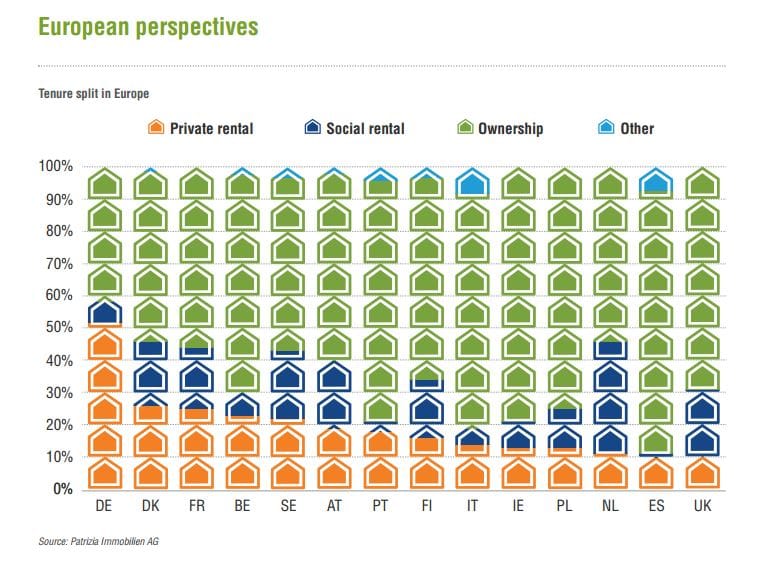Top Story
Ireland is not alone in its struggle to meet the growing social housing needs of its population. The exercise to develop affordable rental housing is one of the biggest issues European cities face.
The global economic crisis resulted in a sharp decline in private residential development in Ireland. Housing supply has therefore not kept pace with the dramatic increase in both population and household formation. The country needs 20,000–25,000 new homes per annum to meet current projected demand.
A roundtable hosted jointly by the Housing Agency and ULI Ireland to explore various approaches that could support Ireland’s social housing needs concluded that no one model would provide an overall solution. Instead, the Housing Agency should consider a strategy that delivers a range of models with the aim to deliver mixed-tenure, mixed-income communities that can ease the affordability pressures. These also need to take into consideration cultural factors and the current housing system in Ireland.
The starting point for the roundtable was the feasibility of a cost rental system, which is being explored by the Housing Agency. However, the roundtable also discussed the benefits and drawbacks of the affordable market rental and Build to Rent models. It looked at examples from across Europe, and potential financing mechanisms.

The cost rental model, whereby rents are calculated based on the amortised costs of the land acquisition and development over a period of years, has been seemingly successful in countries such as the Netherlands and Sweden. However, participants in the roundtable were sceptical of the proposed benefits of cost predictability and stability of rent for tenants, even if lower cost financing could be attracted through the creation of large public housing institutions.
The participants raised examples where cost rental rents were higher than market rents so tenants were penalised, or with the combination of rent controls, there were costs to the taxpayer. Sweden and the Netherlands have also seen the system abused by those that could afford to pay market rents. Any cost model for Ireland would have to be carefully tailored to the market and only form part of the solution.
The affordable rent model was considered more appealing as this type of “discounted market rent” approach was seen as offering a better chance of viability for substantial social housing provision.
This focus on viability underscored the general view from participants that for any social housing model to work, there needed to be an element of profit to encourage development, and interest from the private sector. Or, put more simply, if developers don’t make any profit then nothing gets built.
The pressure on UK housing associations to become more commercial, particularly due to declining government grants was cited as leading to innovation, with many UK housing associations evolving into proactive social enterprises. This allowed them to offer a mix of social rent, affordable rent and for sale development to cross-subsidise further social housing.
From a private sector point of view, participants were positive that models such as the multifamily housing industry in the US or the emerging Build to Rent sector in the UK could work in Ireland. They were seen as better addressing the needs of renters but also presenting an appealing form of long-term investment with relatively stable returns for both private institutions and local authorities.
Low interest rates were seen as presenting an opportunity to kick-start a new rental sector with plenty of European institutions wanting access the rental market with plenty of capital available but a shortage of quality stock. However, the low returns relative to the risk made this less viable, as did the lack of a regulatory environment that offered clarity and stability.
While different housing models can be implemented, these also need to take into account other considerations when it comes to Ireland. There was concern as to how large-scale programmes of social housing would take place when private house building had stalled despite the huge demand. There was also the question of whether social housing policies would really undergo the significant changes that would be required to implement either cost rental or affordable market rental schemes.
With the focus still predominantly on home ownership, despite rising costs, rental tenure also needed to become more culturally acceptable in Ireland, and work was needed to enable “lifestyle renters” to make an active choice to rent rather than buy in Ireland.
Become a ULI member today to receive a copy of Exploring Better Rental Options for Ireland. Already a member? Contact ULI Ireland for access to the full report.
Request a copy